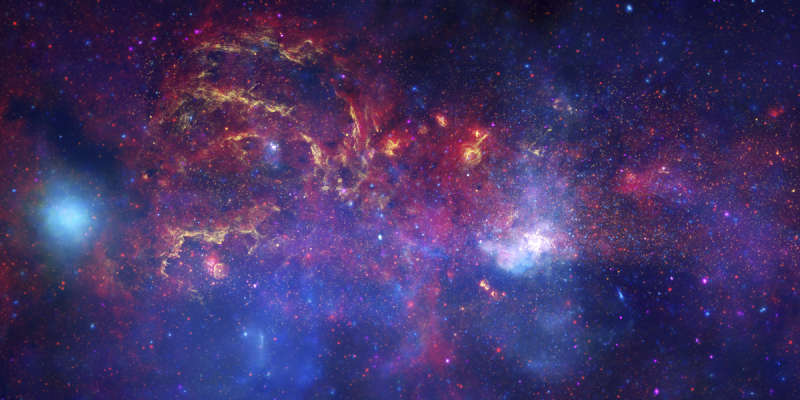Great Observatories Explore Galactic Center

Explanation:
Where can a telescope take you?
Four hundred years ago, a telescope took
Galileo to the
Moon to discover craters, to
Saturn to discover rings, to
Jupiter to discover moons, to
Venus to discover phases, and to the
Sun to discover spots.
Today, in celebration of Galileo's telescopic achievements and as part of the
International Year of Astronomy, NASA
has used its entire fleet of
Great Observatories,
and the
Internet, to bring the center of our Galaxy to you.
Pictured above, in greater detail and in more colors than ever seen before,
are the combined images of the
Hubble Space Telescope in optical light, the
Spitzer Space Telescope in infrared light, and the
Chandra X-ray Observatory in X-ray light.
A menagerie of vast stars
fields are visible, along with dense star clusters, long
filaments of gas and dust, expanding supernova remnants, and the
energetic surroundings of what likely is our
Galaxy's central black hole.
Many of these features are labeled on a
complementary
annotated image.
Of course, a
telescope's magnification
and light gathering ability creates only an image of what a human could see if visiting
these places.
To actually go requires
rockets.
Authors & editors:
Robert Nemiroff
(MTU) &
Jerry Bonnell
(USRA)
NASA Web Site Statements, Warnings,
and Disclaimers
NASA Official: Jay Norris.
Specific
rights apply.
A service of:
LHEA at
NASA /
GSFC
& Michigan Tech. U.

